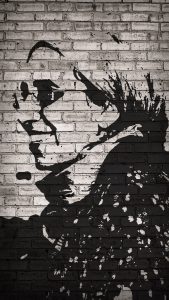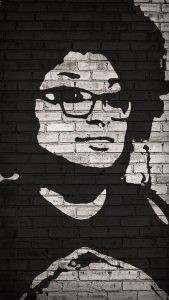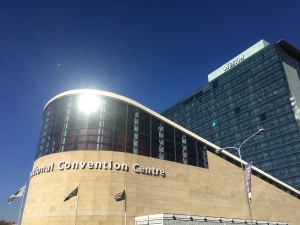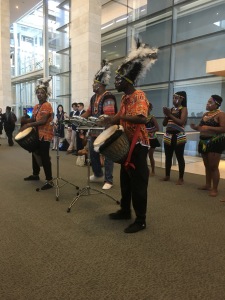Blog Archives
Looking back and looking forward
This is the final post on the OEPS blog before it transitions to an archive. As such I’d like to use it to reflect on the big themes that the project set out to address.
I joined the project following more than a decade of work in the Scottish widening participation scene and recent experience of exploring the use of open educational resources with organisations that support non-traditional students attempting to gain access to further and higher education.
OEPS was distinctive in foregrounding social justice and widening participation but I think I underestimated the challenge that this presented. The Open Education movement grew out of a belief that educational material should be a public good. And this belief has informed developments over nearly two decades. However, at the start of the project it was clear that there were very few points of contact between the Learning Technology and Widening Participation communities in Scotland. Although the latter community was beginning to grapple with issues of digital participation, knowledge of the affordances of open education or indeed of the existence of OER was very limited.
So for the project bringing people together from a range of different backgrounds was critical and we prioritised this in organising events and in targeting possible partners. We’ve written more about this elsewhere and the final project report provides a useful summary of this engagement.

As we developed a network of partners it rapidly became clear that, while the language of open education and the technicalities of open licensing were not well known, a broad range of organisations and individuals were grappling with the social consequences of digital technology. In the OEPS final report we note that
‘… in the last ten years there has been a historic shift in the way that society uses digital technology. Ownership of smart digital devices has grown rapidly. An OFCOM report[1] published in 2015 found that 66% of UK adults owned a Smartphone, up from 39% just three years before. This has had an impact on culture, communication and self-directed learning. However, the links between digital engagement and the digital literacies required for learning are not straightforward. In 2009 the JISC report on Learning Literacies in a Digital Age[2] noted that learners in general are ‘poor at deploying their digital skills in support of learning’. This remains the case for young people entering higher education direct from school and evidence collected during the OEPS project suggest that this is also the case for non-traditional students.’
It’s widely accepted that good practice in supporting students from a widening participation and student retention perspective should be part of the mainstream rather than an add on. Taken as whole I would argue that the experience of the OEPS project suggests that this is also true of good Open Educational Practice.
At the outset we were concerned by the skewed demographics of participation in Open Education, which suggested that historic inequity was being reproduced or even accentuated. Looking at open education through a widening participation lens, and working closely with non-traditional learners and with the organisations that support them, helped us develop valuable insights into the way that stubborn and persistent barriers to educational participation are expressed in digital environments. Digital technologies open up new possibilities and new barriers for students. In developing exemplar open courses with a range of partners the OEPS project provides evidence that these barriers can be overcome. Much more work is needed in this field but critical to success and at the core of good practice are a number of simple issues:
- Developing practice that puts student experience and student context at the centre.
- Understanding the challenges that non-traditional students face.
- Making the maximum use of co-design – involving practitioners and students in the process of making or remixing course material, study approaches and assessment.
- Maximising opportunities for social interaction and peer support in course design. Material delivered online can be used in a whole range of online and face-to-face blends.
- Holding firm to a belief that technology can support education but that it’s a means to an end and not an end in itself.

Image by Shamina Remesh. Becoming lost in a digital world CC BY-SA 2.0
Taking all this on board in a consistent way would be a big step forward. Although not the whole story since, as Maha Bali outlined in her presentation at the final OEPS event, open is always mediated by power and privilege. I would argue that in the digital world that potential students inhabit addressing these issues is a necessity and not a choice if we are to meet the ambitious widening participation targets set by the Scottish Government. But if we can get it right the advantages will accrue to all our students.
Pete Cannell
OEPS Co-Director
[1] http://stakeholders.ofcom.org.uk/market-data-research/market-data/communications-market-reports/cmr15/ accessed 29 March 2016
[2] Learning Literacies in a Digital Age, Beetham et al, 2009 https://www.webarchive.org.uk/wayback/archive/20140614200958/http://www.jisc.ac.uk/publications/briefingpapers/2009/learningliteraciesbp.aspx#downloads
#101 Open stories – Sheila’s story
Guest blog by Sheila MacNeill, Senior Lecturer (Digital Learning), Glasgow Caledonian University. Originally published on 29th March on her blog HowSheilaseesIT.

‘Book with lilac‘ by conger design, used under CC0 licence
‘I’ve been thinking about my OER story or stories. Where to begin? I wish I had the time and the ability to weave a tale worthy of Scheherazade. One full of poetry, wishes, fantastic voyages and the odd djinn. One that would keep Vice Chancellors awake till just after the midnight hour (aka TEF/REF/NSS results publications). One that would entice them to fully embrace open education. However, if I want to get something done this week all I can do is share my experiences and some reflections my open journey so far.
My involvement in the open education world has been quite long and varied. It started during my time at Cetis. We were supporting open standards and open source, had been part of the whole learning object thang, so OERs and wider open educational practice were a natural addition to our remit. I was involved in our first OER briefing paper, was one of the first OLNet fellows back in 2009 when I went to Mexico to the OCWC conference to find out more about that community. I probably should do a time line of open stuff I’ve been involved in . . .
I think my open story is very much an evolving, personal one. Open practice has become an increasingly important part of my working life. I’ve never been “hard core” open, in the sense that it’s never taken up 100% of my time. Even back when I worked with Cetis I wasn’t involved directly in the support of the Jisc/HE OER programmes, I was of course influenced by them and did try to filter the open element to other Jisc programmes I was involved in at the time.
Sharing has always been at the heart of my professional practice. When we were made to blog at Cetis it actually opened a whole new level of professional interaction and personal reflection for me. At the time I didn’t really consider this as open practice, but now I really do. Openly sharing and reflecting has connected me to so many colleagues across the globe. That has been equally rewarding and enriching. It has lead to conversations and sharing of practice and ideas. This open story of mine probably hasn’t changed that much in the last two years.
I think that my experiences of open learning has been, to use a phrase I don’t really like, “game changing” for me. Back in 2011/12 in the heady days of MOOCs I probably signed up for a few too many of them but I really wanted to understand this aspect of open from a learners point of view. I still am a recovering Mooc-aholic. I still slip off the wagon now and again, but it’s not the same as it was back in the old days . . .
My experience as an open learner really helped me to focus and reflect on my own approaches to learning, my own practice in terms of my approaches to learning design, to learner engagement, to peer support, to assessment. In fact all the things I do now as part of my job. It also introduced me to another set of fantastically diverse, open learners and educators. People like Penny who is one of the organisers of the 101 stories project.
Open-ness is now a habit for me. It’s part of my practice, but it has natural (and at time imposed) peaks and troughs. Not everything can or should be open. I often find it a struggle to keep open on my agenda. I’m still working out my own praxis with open-ness. I’m doing this through the work of many open education researchers, people like Catherine Cronin whose work provokes and inspires me, and leads me to many others who are working in this field.
Open education isn’t a fairy tale, but it does confront some vary salient, moral and ethical issues around education. Including but not limited to: who can access education and publicly funded resources/data/research findings. What rights do staff have over materials they produce whilst working for institutions? Open-ness doesn’t automatically lead to a happy ending. It has many twists and turns, just like the stories of the Arabian Nights. It might be a bit like The Force in Star Wars, surrounding us and binding us. . . but that’s a story for another day.
Today as the UK takes a leap into the unknown and to closing of borders and creation of barriers, we need open stories more than ever. We need these stories to permeate, to keep open on the wider political agenda. To keep people talking about open, in the open.’
This guest post is published as the first of many celebrating Open Education in the run up to the OEPS final event, The Promise of Open Education at Dynamic Earth, Edinburgh on Monday 11th September. Sign up for the event or join the conversation before, during and after the event with the hashtag#BeOpen’.
This post was originally published as part of the #101 open stories series. It was published on HowSheilaseesIT under  . It is republished under the same CC BY NC SA licence.
. It is republished under the same CC BY NC SA licence.
Developing business models for open, online education
In the latest addition to the OEPS collection of reports and briefings we reflect on the ways that institutions are engaging with open education. The report considers emerging models under six broad and often interconnected categories:
- Institutional Profile
- Public Good
- Knowledge Exchange
- Curriculum Development
- Educational Transitions and Widening Participation
- Professional Development and Communities of Practice
The report discusses the opportunities and challenges for institutions and concludes that ‘genuinely sustainable business models will depend on combining policy and practice across a range of different areas of application.’
You can download the report here. It will be added to the OEPS Legacy Collection.
Workshop Gamestorming by Sebastiaan ter Burg licensed as CC BY 2.0
Our collection of open resources and practices
As the OEPS project draws to a close, there is much to celebrate. We are pleased to share the growing collection of open courses, resources, case studies and open practice guidance which the project has helped produce and showcase the online platform, OpenLearn Create, which the project has helped further develop for hosting open materials and practices and where the OEPS collection is hosted.
In the OEPS collection:
Resources for OEP includes case studies on how other people and institutions have used open educational resources and practices; guidance on ways of finding, using, creating and sharing high quality open educational resources (OER) and how to use open educational practices and research on open education. These are worth exploring to find something which might be similar to your own experience and give you encouragement to continue investigating the fascinating world of open learning and what it enables for so many people.
The OEPS team have written two courses about open educational practices, Becoming an open educator and Supporting Collective learning in workplace and community settings and have also been involved in co-authoring a course about creating courses – How to make an open online course.
OEPS also worked with the Scottish Association of Marine Science (SAMS) to create a short course called My seaweed looks weird for post graduate learners about seaweed aquaculture to explore best practice in seaweed cultivation.
We have produced two short resources introducing secondary school children to using the Open Science Lab tools to enhance their learning of Analysing pesticides or testing for genetic variations using quantitative PCR analysis (polymerase chain reaction). Early in the OEPS project these were piloted with two schools in Scotland and have been revised slightly as a result of the pilot.
Courses developed with OEPS or inspired by it:
Early in the project The Open University in Scotland produced 3 badged open courses for carers which carry the OEPS badge design – see the OU in Scotland collection for Caring Counts: a self-reflection and planning course for carers, Caring Counts in the Workplace and Reflecting on Transitions.
We are working with Parkinson’s UK on their collection of courses and Dyslexia Scotland and Addressing Dyslexia Toolkit on a collection of courses. So far Understanding Parkinson’s and Introduction to Dyslexia and Inclusive Practice have been published and each organisation has worked with OEPS to develop more courses which are coming soon.
More recently we’re pleased to see that the OEPS project has encouraged independent course creation – see the free resource for teachers Grow your own loaf created by the Royal Highland Education Trust, inspired by the OEPS project and hosted online as the result of the availability of the free open platform which the OEPS project has helped improve.
Using the OEPS collection
We hope that you will find the OEPS collection useful, not only as a legacy of the project but also as a place to find and share information on open educational practice. The collection can be updated so please contact the OLC team if you would like to contribute to it.
Save the date! OEPS final event

OEPS final event save the date (by Anna Page, CC BY NC SA 4.0)
‘The promise of open education’ conference is the final event of the OEPS project. It will take place on Monday 11th September in Dynamic Earth, Edinburgh. Further details about the event will be made available soon, however please save the date in your diaries.
Open badges – new developments
I attended the mini conference ‘Open Badges: what, why and how’ at the University of Dundee on 19th June. Dundee is working with the Universities of Abertay and Aberdeen, under the aegis of the QAA Scotland Transitions Enhancement Theme, to explore the use of Open Badges. The focus of the project is on transitions from university to employment and the use of badges to recognise employability skills through extra- and co-curricular activity. The University of Abertay already has some really interesting experience of using this approach with their LLB students. The conference also included presentations from Grainne Hamilton on her work at Digital Me and Doug Belshaw who looked at the future of Open Badges in a talk titled ‘Open Badges in Higher Education: 2.0 infinity and beyond!’.

Doug Belshaw speaking at Dundee Conference, image by Pete Cannell, CC0
Still on the theme of transitions the Open University’s suite of Badged Open Courses (BOCS) on OpenLearn. There are now seventeen available. The majority are concerned with supporting transitions from informal to formal learning. However, the latest addition to the collection is ‘Succeeding in postgraduate study’ aimed at supporting the transition from undergraduate to postgraduate study. Whilst this free, openly licensed course was written by the OU, it will be of interest to colleagues across Scottish higher education and applicable to any student making the transition to postgraduate study in Scotland. The selection of Badged Open Courses on OpenLearn Create also continues to grow, including the OEPS collection.
Pete Cannell
Reflections on OE Global and OER17 – part 2
by Anna Page (OEPS project)
After spending time at OE Global in Cape Town, 4 weeks later I was attended the first day of OER17 in London, chaired by Josie Fraser and Alek Tarkowski, where I was fortunate to hear two great keynote speakers challenge our perceptions about open education. Maha Bali encouraged us to think about how OER might be viewed in situations where intellectual property of material is less relevant to teachers because of their country curriculum situation or where academic freedoms, taken for granted in many Western democracies, are not available to certain groups of society, particularly women. Or where access to the internet was limited or restricted, depending on ability to pay (access to the internet is never free). She pointed out the inequalities of treatment of internet users with some being more vulnerable to harassment, trolling or surveillance than others. In addition the interpretation of accessibility of materials came under scrutiny. Maha Bali asked the question about whether openly licenced works follow the letter but not the spirit of openness. She asked us to think about which of two options was more openly accessible: the use of complex academic language in an openly licenced article or material written in accessible language but carrying a more restrictive Creative Commons licence, such as no derivatives. She challenged us to think about the model of western funding for third world projects which did not explore the needs of the beneficiaries and impose solutions which subsequently don’t work or influence those seeking funding to conform to western ideas of what should work, without due regard for the cultural and contextual needs of their communities.
Maha opened up her keynote to get live open educational practice stories from the audience, which meant the development of her keynote was not ‘complete’ until she was delivering it as she responded to each story and led into the next prepared idea seamlessly, therefore breaking the accepted view of a lecture being about delivering ideas in one direction of transmission rather than exchange, a demonstration of ‘open educational practice’ in action. She also explored the birth of ideas and intentions (comparing them to seeds) and how they might be nurtured first in private (hidden deep inside) then emerge into the public when they were ready to be shared (make explicit) where nurturing would need to continue by all involved to reap the rewards.
Later, in the second keynote, Diana Arce got us to think about the use of art as a tool for involving people in political activism. She took us through a thought-provoking and lively journey of how art in public spaces is used and interpreted taking into account who commissions it and the location in which it is placed. She showed how audience involvement in its creation was essential to empower people to understand, think and grow, offering them an alternative narrative via open spaces to share art and dialogue. The essential message was “don’t tell people what to think”, use art to help their ideas and contributions emerge. Open projects could use artists as strategists for development of open resources, going to where people are in order to engage them in the act of creation and knowledge building.
After the first keynote at OER17, I attended a panel discussion called Perspectives on Open Education in a World of Brexit & Trump (#trexit), with panellists Maha Bali, Lorna Campbell (from Open Scotland), James Luke and Martin Weller. In addition to the four panellists, there were video recordings from 4 others who contributed real life examples of how these votes which have changed the global political landscape are affecting their academic practice, which the panel then discussed and opened to the floor for comments and questions. It was sobering to see how the laptop ban on flights from certain countries to the US and UK is seriously affecting the progress of a PhD student and had also negatively affected keynote presenter Maha who had travelled from Egypt without her laptop or presentation on a memory stick (she had put it into cloud storage online before travelling). The theme of the conference was very evident in this discussion, and it was clear that ‘Open is always political’.
The parallel sessions in the afternoon offered plenty of choice and inevitable clashes – my OEPS presentation was on at the same time as the OEPS presentation given by Ronald Macintyre. Mine was the third in a group of 3, the first of which was about Academic confidence building with student use of Wikipedia, as they learn to collate Wikipedia subject pages (enhancing their digital literacy) and the second was an introduction to the MOIN project which is just starting to explore the challenges of cross-sectoral use of OER in Germany, where significant barriers still exist. These include legal barriers (licencing) and the lack of knowledge about where to find OER, training and digital literacy, all issues we grapple with on this project. It seemed fitting to follow this with the OEPS presentation about the evolution and further development of the OpenLearn Create platform for hosting open courses and the open educational practices modelled by the OEPS approach to course building in partnership. Several questions and a lively discussion followed the three presentations, including questions to me about whether OpenLearn Create would get inundated by courses which might not follow good practice or break the terms of use of the site. My response was that since the redesign in January we have had one spam course so far which has been taken down and that the Terms of use need to be more explicit in site usage and on data protection, so there is further work to do. However so far the site has not been flooded with lots of new courses built by third parties on their own, most people seem to be quite tentative in getting started without contacting us first.
I also enjoyed the subsequent parallel session which included the OEPS presentation Exploring International Open Educational Practices presented by Beck Pitt, Bea De Los Arcos, and Michelle Reed in which they explored various definitions of OEP, some of the case studies and the emerging framework of open practice based on the research to date. This was followed by Catherine Cronin and Laura Czerniewicz’s Critical pragmatism and critical advocacy: Addressing the challenges of openness which explored how purist definitions of open can be a limitation to open practice, with pragmatism helping to address the challenges. Then Michelle Harrison and Irwin Devries presented Advocating for Open: the role of learning support professionals in changing practice, which reminded us that external online support networks are often the only source of support the lone open educational practitioner might have if their institution doesn’t have a policy or support mechanism for OER, and this has not changed much in the past two years, according to their research.
From my perspective, the key messages which crossed both conferences showed that the awareness of OER, what it is, how it can be used, reused, and created is still in its infancy in many educational organisations, let alone in the third sector and there is much to do to make it and the practices which enable it to become more mainstream. A rallying cry at OE Global was for OER advocates to be more vigorous in actively marketing OER and OEP. This would help to balance the professional HE marketing of their online lectures/open textbooks/MOOCs which often drowns out really good community produced OER which may have better pedagogical value than a series of online video lectures not viewed in their original context. The thorny question of how to measure the impact of OER was also voiced at both conferences, though to a certain extent good practice surrounding this question is explored in Becoming an open educator.
In addition, a strong message was that OER will not be adopted by learners and teachers if it is imposed, only if it is created collaboratively, The OEPS experience of collaborative open course production in partnership is one example of how this can work to the benefit of learners. Widening participation continues to be a strong theme of the OEPS project and will be discussed at the forthcoming Porous University seminar in May 2017. In both the OE Global and OER17 presentations I shared the questions we consider when we reflect on partnerships using open education: “if partners are looking to OER development as a way to fill structural holes in individual learning journeys, what are the implications for formal learning providers with a focus on widening participation? Does this mean that formal providers would have less of a role in widening participation if external organisations fill these holes or, more constructively, can formal providers see this as an opportunity to work more closely with external organisations to enhance their formal curriculum? By using OER created as a bridge to formal learning, learners can be provided with qualifications which directly relate to their career and lifelong learning opportunities?” (OEPS presentation extended narrative for OE Global 2017).
In a world of #trexit and austerity budgets which are reducing public services including education, it is all the more vital for HE, FE and third sector organisations to work in collaboration to ensure that a good education is open to as many people as possible.
Image credits: Josie Fraser and Alek Tarkowski welcome us to OER17, Beck Pitt presenting for OEPS at OER by Anna Page and licensed CC BY 2.0. Maha Bali and Diana Arce images by Josie Fraser for OER17.
Reflections on OE Global and OER17 – part 1
by Anna Page (OEPS project)
Attending a Higher Education conference is always unique to each person. There is always a lot going on and with presentations scheduled in parallel sessions it is impossible to attend everything or talk to everyone. This year OEPS had a poster and a presentation at OE Global which for the first time was held in Cape Town and then a few weeks later had several presentations at OER17 in London. These are my reflections of attending both conferences.
I was fortunate enough to present a poster and presentation for OEPS at the 3 day OE Global conference, hosted by the University of Cape Town and chaired by Dr Glenda Cox, in the mother city of South Africa. The conference was held in the city based international conference centre, rather than on campus which sits on the lower slopes of Devil’s Peak. OE Global is organised by the Open Education Consortium and has always been in the ‘global north’ so it was good that the open education researchers in the ‘global south’ were given the opportunity to host it and challenge ‘global north’ perspectives about open educational resources (OER) and open educational practice. I had not attended OE Global before so it was an enormous privilege to travel such a great distance to present on behalf of OEPS in the city of my birth. Everyone I spoke with at the conference was very engaged in open education and how it might be used to improve the educational opportunities of a wider group of learners.
There was significant representation at OE Global by two overlapping groups – the ROER4D project, convened by UCT and the GO-GN researchers, convened by the OERHub based at The Open University. I attended several presentations by people from these groups, including a discussion about making use of MOOCs at UCT and another about understanding lecturer’s adoption of OER at three South African universities, postgraduate students as OER capacitators and exploring open educational practices of first year students at a SA university. I was interested in collaborative practices, so attended a presentation on teacher collaboration and practice (by Melissa King of BRIDGE, an NGO) which also explored the thorny question of measuring impact of OERs and one about teacher professional learning communities in India (this was a ROER4D sub project).
I was fascinated by the experience of an OER creation novice, Professor Jasmine Roberts from the USA, who discussed the impact of authoring OER on student engagement, learning and retention when she authored an open textbook for her students because the existing textbooks didn’t cover what they needed for their class. Early in her presentation she identified key reasons why more teachers are not using or creating OER: This is the same issue that Josie Fraser and others discussed at the OEPS forum 4 last year and is a challenge common to both ‘global north’ and ‘global south’ educators. Some of us in the session were able to point Jasmine to online resources which offer such advice and support, such as OEPS Becoming an open educator and How to make an open online course OERs on OpenLearn Create. However it was also clear from her experience that supportive open educational practice networks to help with answering specific questions about OER creation can help give OER creation novices the confidence to make a good start or to avoid some of the pitfalls along the way. It was encouraging to learn that the open textbook she offered her learners for free was well received, proved accessible to the learners and had a positive impact on their learning and enjoyment of the class.
The issues about making the work of researchers in the global south more visible and discoverable was explored by a presentation about the ROER4D curation and dissemination strategy. This strategy aims to make content open by default when it is legally and ethically possible to do so, especially if this increases its value to learning. I liked the fact that in the reasons why it was necessary to have such a strategy, all the arguments for good academic practice were cited as also good open educational practice. This was approached in a way to make it attractive to an academic to implement.
The poster sessions were in the coffee breaks and I was able to discuss the poster with several people as well as hand out OEPS leaflets, stickers and OpenLearn pens!
My presentation was on the last day in the final session before the closing plenary. It was encouraging to have an interested audience and some good questions about what OEPS has been doing with opening up practice on participatory course production. Beck Pitt, OEPS Researcher, live broadcast the presentation via Twitter Periscope.
After the closing plenary panel it was time for goodbyes as everyone dispersed back around the globe after taking in some of the sights of Cape Town.
Part 2 covers OER17 in London and my reflections on comparing the themes of the two conferences.
#oeglobal Anna page open courses https://t.co/ANn10BK5ZK
— Beck Pitt (@BeckPitt) March 10, 2017
Image credits: Cape Town Convention Centre, OE Global Gala Dinner, View of Table Mountain and Lions Head and Anna by the OEPS Poster by Beck Pitt and licensed CC BY 2.0.












